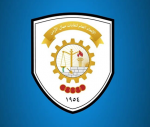You are here
Media literacy: The interplay between education and media
Jul 05,2021 - Last updated at Jul 05,2021
By Razan B. Nweiran and Christopher Hill
Rapidly evolving, and increasingly complex, media and technology ecosystems have created a diminishing public trust in state-run media; sources of factual information and unbiased analysis. This has been accompanied by the blurring of boundaries between facts and opinions, the rise of hate speech and incitement, the deification of opinion, interpretations and personal experience of the “influencer”, and the rise of political polarisation, cognitive bias and populism in the national political and civil discourse. Such repercussions increase alienation and in extreme cases, radicalisation rather than engender security and inclusion in the community. This demands the interplay of education, media and social media to enhance, through efficient and ethical methods, the ability of a well-informed citizenry to exercise critical thinking and demonstrate media literacy.
Education and media provide rich opportunities as agents of social change. While both can represent and transmit governmental goals and values, they can also operate dynamically on “meso-level” for civil transformation. In education, teachers, content and pedagogies play a vital and critical part linking micro-level personal attitudes and macro-level social change, facilitating the change from personal to societal level. Media literacy education aims to empower individuals to be active, engaged citizens, sorely needed in today’s increasingly challenging media environment. This environment displays erosion of civil discourse, political paralysis, alienation and disengagement from political and civic institutions; uncertainty over national policy, and ignorance of cybercrimes such as privacy incidents and ransomware attacks.
Media literacy is a relatively new field of study, lacking in a static definition, that continues to be explored and advanced in theories and pedagogies worldwide. The underpinning philosophy is the enhancement of critical thinking, in order to recognise and deconstruct diverse sources of media, and how they were produced and spread.
To begin with, there should be a solid yet flexible structure for the information and media environments with clear, transparent and actionable digital and media literacy policies and regulations. Policies should align with national visions and digital transformation capability, in order to establish a sustainable national media literacy program. Public and private sectors, along with civil society, collaborate constructively to increase awareness about digital and media competence. Implemented programs and their impact on the lives of youth, and citizens should be systematically monitored, analysed and assessed.
In education, it begins with developing standards of media literacy and integrating them across the curriculum. As schools represent society in miniature, media literacy education should be fully present. Higher education institutions should incorporate it in their programmes. Teachers, as the forefront agents, need to foster greater professionalism by demonstrating knowledge, transparency, and accountability in guiding their students. This requires supporting teachers with training through professional development and with guidance to designing media literacy programmes, establishing learning resource centres that are the equivalent of school libraries, and organising virtual media exchange projects, regionally and internationally, to increase knowledge and awareness and to create a hub of well-networked teachers, educators, and academics.
There are various opportunities, and a wide range of activities, that can be integrated in the classroom to develop a broader understanding of the role media play in our lives, and to improve the skills needed to analyse what we read and watch purposefully while building our students’ numeracy or vocabulary and language skills. Through well-planned lessons, with quick and easy project-based learning opportunities and effective repertoire of teacher-student communication, students can explore the world of advertising and identify targeted marketing strategies, analyse visual language and sources, detect bias or conflict-proliferation content or even rate video games that could incite violence and lead to aggressive behavior. They can also examine and debate how diversity representation in media influences individual identity and society, evaluate the positive and negative aspects of social media conflict-filled episodes or create public service announcements to raise awareness, and propose media ethics.
There have been efforts to raise the general level of awareness on how to interact and deal with the media, but more is still needed. Media literacy education fosters the skills that enable us to be wise and responsible media consumers and producers, encourages respectful discourse and builds citizenship skills.











